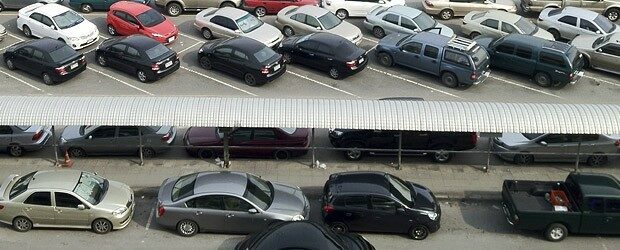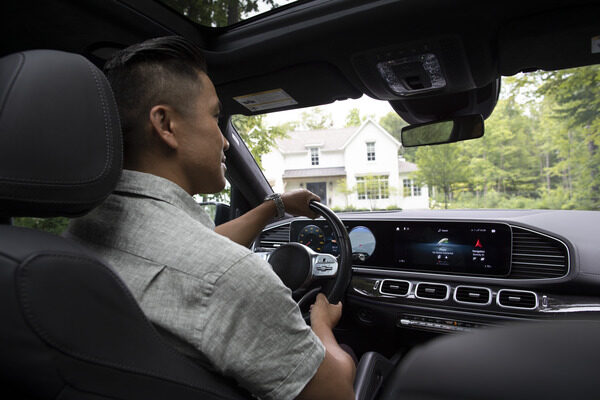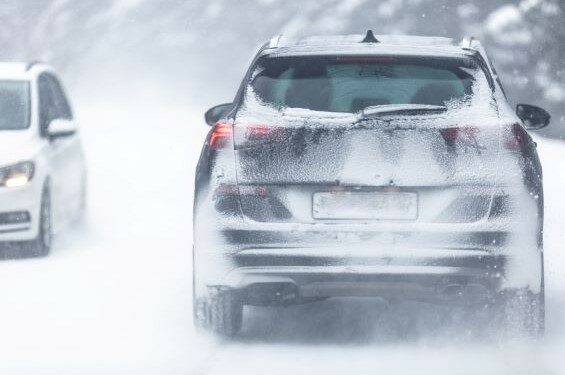
More accidents occur there than you’d think. Here’s how to protect yourself.
While it may be overlooked as a potential danger zone, you shouldn’t ignore the risks of driving in a parking lot: In findings based upon its claims data, Nationwide estimates that 13% of automobile accidents occur in parking lots.
Why? Because parking lots are busy places. There are parents crossing in front of you with young children, vehicles moving in and out of spaces, an occasional stray shopping cart and, yes, even a teenaged skateboarder who seemingly pops out of nowhere. So it’s especially important to stay alert at all times. “Constantly scan your surroundings,” says Tom Milewski, lead instructor at Drivers Ed Direct, a Los Angeles-based provider of both in-vehicle and online driving training. “By doing so, you can greatly reduce your chances of becoming a variable in a parking-lot incident.”
Milewski and other experts recommend these best practices to keep from getting into a parking lot and/or garage accident:
How to steer clear of a parking lot accident:
Slow down
A strip-shopping center parking lot isn’t Daytona International Speedway. But judging from the way some folks whip around the lot, you’d think otherwise. Despite the occasional reckless nature of others, you should always take the high road by easing up on the pedal. “There will be cars, people with shopping carts and other objects coming from potentially anywhere at any given time,” Milewski says. “Limiting your speed to five miles per hour is the safest bet to maintain a 360-degree perspective.”
Send a message
Other motorists and pedestrians can’t read your mind. It’s best to provide visual clues about your intentions. “Communications is essential,” Milewski says. “Anytime you intend to turn, pull into a spot, etc., you should use your signal. This is seemingly an understood rule. But more drivers don’t signal than do.”
Practice proper parking etiquette
Nothing is as potentially aggravating as the motorist who insists upon “backing in” to a parking space – with endless failed attempts to do it correctly – while extensively interrupting the flow of traffic. “Pulling in head-first is safer than trying to back into one, especially in areas where space is tight,” says John Pesack, a defensive-driving curriculum developer for Driver Training Associates Inc., which offers online classes at TicketSchool.com. “Also, be mindful of how much room you’re giving vehicles next to you. Don’t park in a compact space if you’re not in a compact car. Don’t park so close to others that they can’t open their doors.”
In general, apply “Golden Rule” thinking to parking etiquette. “Extending simple courtesy and thinking for the good of everyone will reduce lots of congestion,” says safety expert Thomas E. Boyce, president and senior consultant at the San Carlos, Calif.-based Center for Behavioral Safety. “For example, you’ll park much more quickly and free up traffic by parking farther away from a store rather than waiting by the entrance to take a closer space. The latter behavior is more disruptive and likelier to cause ‘parking lot rage.’”
When backing out…
Always “use your head” to visually check where you’re going by turning around and seeing if it’s clear, Pesack says. Never rely solely on mirrors or rear-view cameras. If you’re parked between larger cars (like a big truck or SUV), back out as slowly as possible. “In any situation while backing out, you should seldom—if ever—use your accelerator,” Pesack says.
Approach with caution
In a garage, there are plenty of “blind spots” where you really can’t see much of anything around the corners and/or your view is obstructed. Many garages paint the word, “STOP,” in yellow or white to caution drivers about darting out in front of traffic. However, too many ignore the warnings.
“The well-known red octagon-shaped stops sign on the street is more formal,” Boyce says. “It implies a mandate because we know we can get a ticket for violating it. The same prompt written in yellow or white on a pavement is seen as more of a recommendation than a requirement.” To ensure safety at all times, it’s best to treat the markings just like a regular street stop sign.
Parallel parking 101
While it’s not common, there are still lots where you may need to parallel park. Some of us literally go years without doing this and may be a bit rusty. So the following tips from Milewski are helpful in these situations. For the purposes of this illustration, visualize that the space you seek is to the right of your vehicle, or on the passenger side:
- The parking space you’re trying to park into should be at least 1 1/2 times the length of your vehicle.
- Stop when you’re parallel to the car you wish to park behind, with about 18 to 24 inches of space between your vehicle and that car, and just past the open space.
- Go into reverse and align your back tires with that car’s rear bumper, then stop.
- Rotate your steering wheel entirely to the right and hold it. Slowly reverse until your vehicle is at a 45-degree angle with the curb.
- Straighten the steering wheel while stopped.
- Reverse in a straight line until your front bumper clears the rear bumper of the car in front of you.
- Stop and turn the steering wheel entirely to the left.
- Release the brake slowly. You should be able to turn into the space without contacting the car in back of you.
Staying accident-free can pay off in more ways that one. Sign up for Vanishing Deductible® and you can earn $100 off your deductible for every year of safe driving.



